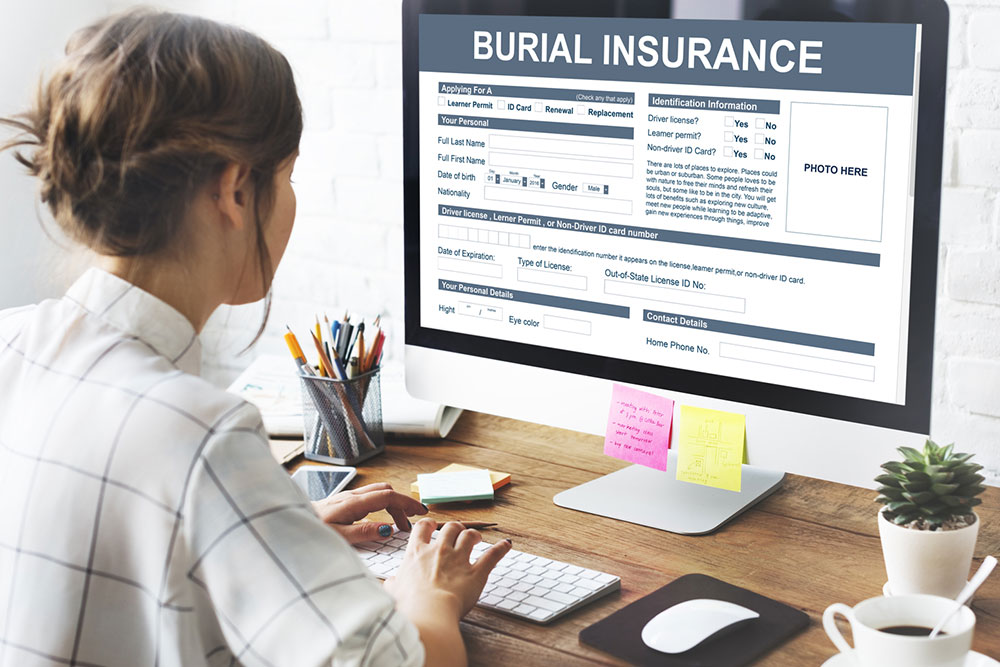
Burial insurance – Types, coverage, and things to consider
Burial and funeral are sensitive things to speak about, but one must understand certain elements of it. One important part of the process is burial insurance (funeral or final expense insurance). The insurance option covers the deceased member’s funeral, burial, and other associated expenses. Moreover, it ensures that the member’s family does not have to worry about paying excessively out of pocket on the sensitive occasion. Here are some important things to know about burial insurance.
Types of burial insurance
Before one purchases a policy to cover burial and funeral costs, it is important to consider all the available insurance types. The most commonly available options include:
Simplified issue life insurance
Under this type of insurance, an applicant does not have to undergo a comprehensive healthcare examination to be eligible. But, one will have to answer a few questions associated with their health. If an applicant has any pre-existing health complications or if the person indulges in activities that may endanger their life, they might be denied this policy. One should also note that a simplified issue policy offers quicker approvals and could even provide higher coverage amounts in comparison to other types of insurance.
Guaranteed issue life insurance
This type of policy does not require any health questions or healthcare examinations. Those who apply for it are approved as long as they fall within the age range specified by the insurer (usually 50 to 85 years old). A guaranteed issue life insurance policy also has a waiting period, during which, if an individual passes away due to natural causes, the beneficiaries do not receive the entire sum assured. Since the policy may also put the insurer at a higher risk, the policyholder may need to pay a higher premium.
Pre-need insurance
A pre-need insurance policy is usually sold directly by funeral homes. The plan is designed to cover specific costs of prearranged funeral and burial services. Furthermore, the funds from pre-need insurance policies are typically paid directly to the funeral home or cemetery, which ensures that the services specified by the policyholder are offered as planned.
Coverage offered by a burial insurance policy
Apart from the types of coverage, one should also be mindful of what the burial insurance policy covers. The payout received by the beneficiaries from these policies could be used for:
- Funeral services
The expenses included in this are associated with the funeral home, including the preparation and embalming of the body, viewing, memorial services, and hearse. - Burial or cremation costs
Expenses such as the cost of an urn, a burial plot, a casket, or cremation services fall under the burial or cremation costs. - Outstanding healthcare bills
The proceeds from the insurance could be used to pay outstanding healthcare bills or outstanding health-related expenses. - Outstanding debt
This aspect covers expenses such as loans, unpaid bills, and debts. - Unforeseen expenses
There might be unforeseen expenses that arise during the end-of-process. Healthcare insurance could help cover these costs, too.
Things to remember when getting burial insurance
One should remember a couple of tips before purchasing burial insurance, irrespective of its type. These could help ensure the insurance aligns with one’s financial goals and needs. These things include:
Determine funeral expenses
One should determine the estimated cost of the funeral and burial services before choosing or purchasing the insurance. One must remember that the costs may vary depending on different factors, including location, type of burial or cremation, and the kind of services one desires. Having a better understanding of the costs will help one determine the right coverage to suit their requirements.
Research different insurance providers
An individual must research insurance options from various providers before paying the premium. This is because each insurance provider may offer different rates, coverage limits, and other policy features, such as waiting periods. Comparing policies from different providers could help individuals determine the ideal plan for their needs.
Learn about payment methods
After one has selected an insurance provider and the associated policy, one must determine the payment method for premiums. The burial and funeral insurance provider might allow the individual to pay monthly, quarterly, or annually. Additionally, some insurers may offer single premium payment options where the policyholder can make a one-time lump sum payment.
Be mindful of the waiting period
Most burial insurance policies may have a predetermined waiting period, depending on the type and coverage. So, if a policyholder passes away before the waiting period ends, the beneficiaries may not receive the assured sum. Instead, the policy might offer a limited death benefit during this period. So, one needs to be mindful of the waiting period for each policy before making a selection.
Know about the age limitations
Before buying a burial insurance policy, one must know about the age limitations for eligibility. The age range may differ based on the insurance provider and the policy type that the individual picks. The guaranteed issue burial insurance is provided to those aged between 50 and 85.
Burial insurance is a useful financial tool for individuals who want to ensure their funeral and end-of-life expenses are covered without burdening their loved ones. It is also beneficial for those who want to leave behind adequate funds for their family and do not wish their funeral expenses to deplete existing resources. One should consider their financial situation, expected costs of their end-of-life arrangements, and family needs to determine if they require burial insurance.


